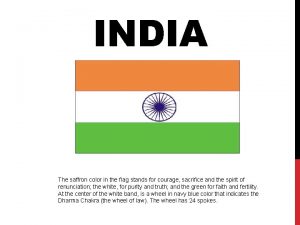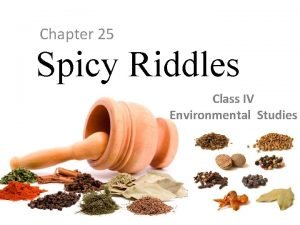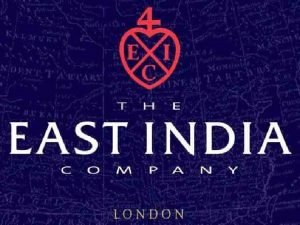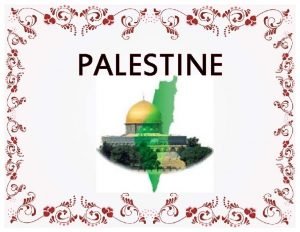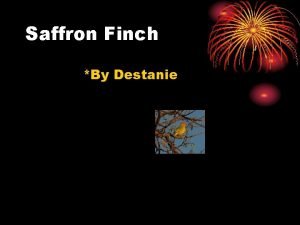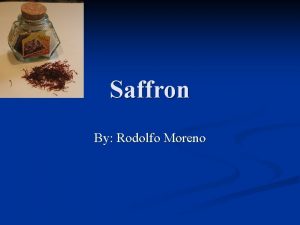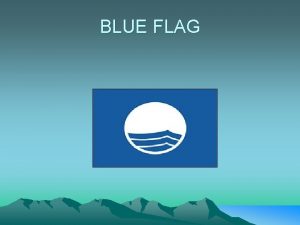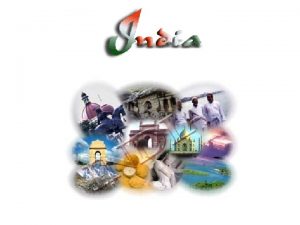INDIA The saffron color in the flag stands
















- Slides: 16

INDIA The saffron color in the flag stands for courage, sacrifice and the spirit of renunciation; the white, for purity and truth; and the green for faith and fertility. At the center of the white band, is a wheel in navy blue color that indicates the Dharma Chakra (the wheel of law). The wheel has 24 spokes.

PHYSICAL GEOGRAPHY 2 Major Rivers-Both begin in the Himalayas • Indus River-Home to some of the earliest civilizations -River valleys have fertile soil for farming • Ganges River-most heavily populated river basin in world -sacred river to Hindus -One of the top 5 polluted rivers

GANGES

MONSOONS Winds that change direction with the change of season • Play an important role in climate


POPULATION • 1. 21 billion people • Projected to pass China by 2025 • 70% of people live in crowded rural areas

INDIA’S LOST POPULATION • Estimated 1, 000 girls aborted/missing each year • Called gendercide • Main reason=Dowry (cultural tradition) cost families too much $ • If not paid spouse wife faces abuse • Ultrasound and gender based abortion are both illegal but rarley enforced • 10 ultrasound clinics on one street • Done by both rich and poor • In some areas ratios are 300 girls to 1, 000 boys

RESOURCES • Very little oil • Depend on nuclear and hydroelectric power

HOW DID INDIA GET HERE? • Plate movement

INDUS VALLEY CIVILIZATION 2500 BC to 1600 BC Aryans=Indus Valley people + Central Asia newcomers • Ruled for more than 1000 years • Divided People into 4 classes • • Priests/educated Rulers/warriors Farmers, artisans, merchants Laborers *This was a way to keep order

CASTE SYSTEM • A social group into which people are born and which they cannot change Today it is not followed much in big cities, more in the countryside Caste based discrimination has been outlawed

RELIGION Two Religions • Hinduism-main religion of India • One of the oldest religions • No founder • Polytheistic • Buddhism • Started in India • Founded by Siddhartha Gautama (Buddha) • Spread throughout Asia but died out in India

TAJ MAHAL • Considered to be one of the worlds most beautiful buildings • Emperor Shah Jahan built it as a tomb for his wife • It took 23 years to be completed

GANDHI • 1858 -1947 India was ruled by Britain as a colony • In the early 1900’s an independence movement started • Leader-Mohandas Gandhi • • Stressed non-violence and boycott India became independent in 1947 • 1947 Partition (division) • Divided India into 2 countries • • India-Hindu Pakistan-Islamic 1 million people died during move • 1971 India helps Bangladesh break away • Fight over Kashmir • 1998 both countries test nuclear weapons

INDIA TODAY • 2 nd most populated country • More than 1 billion people • By 2050 expected to be the most populated • 72% rural 300 million in urban areas=US population • ¼ in poverty • Growing middle class • 2 nd fastest growing economy in Asia • Industry, computer software, film industry, exports more than imports, produces all of its own food • Democratic Government • Literacy rates up

CHALLENGES TODAY • Large population • Pakistan (PG 188) • Malnutrition • Life expectancy 53 -1981 63 -2003
 Courage and sacrifice
Courage and sacrifice Courage and sacrifice
Courage and sacrifice Which spice look like a nail
Which spice look like a nail Saffron dubai atlantis
Saffron dubai atlantis East india company flag
East india company flag What color is the irish flag
What color is the irish flag Palestine flag meaning
Palestine flag meaning Hát kết hợp bộ gõ cơ thể
Hát kết hợp bộ gõ cơ thể Bổ thể
Bổ thể Tỉ lệ cơ thể trẻ em
Tỉ lệ cơ thể trẻ em Gấu đi như thế nào
Gấu đi như thế nào Tư thế worm breton là gì
Tư thế worm breton là gì Bài hát chúa yêu trần thế alleluia
Bài hát chúa yêu trần thế alleluia Các môn thể thao bắt đầu bằng tiếng bóng
Các môn thể thao bắt đầu bằng tiếng bóng Thế nào là hệ số cao nhất
Thế nào là hệ số cao nhất Các châu lục và đại dương trên thế giới
Các châu lục và đại dương trên thế giới
